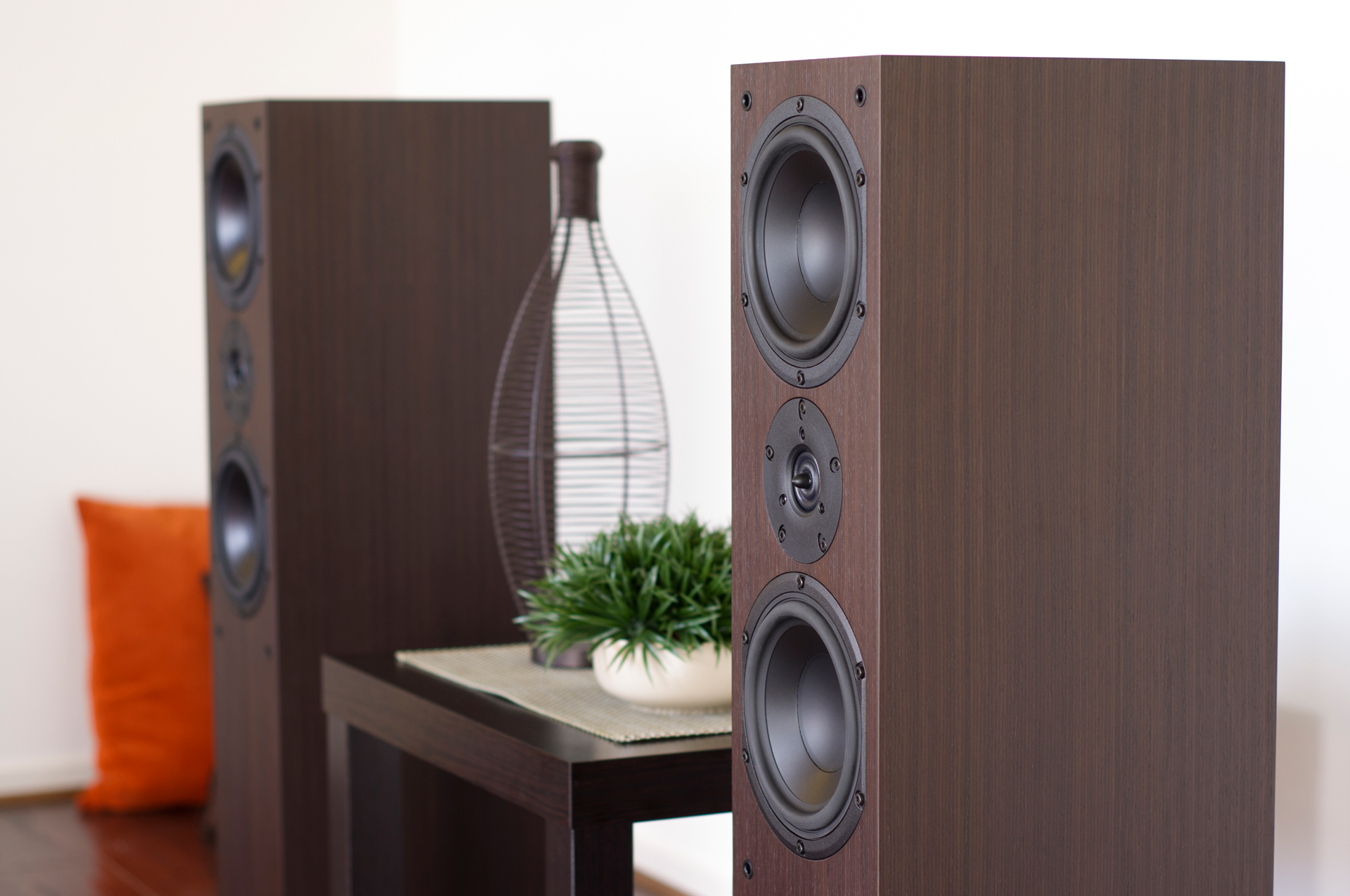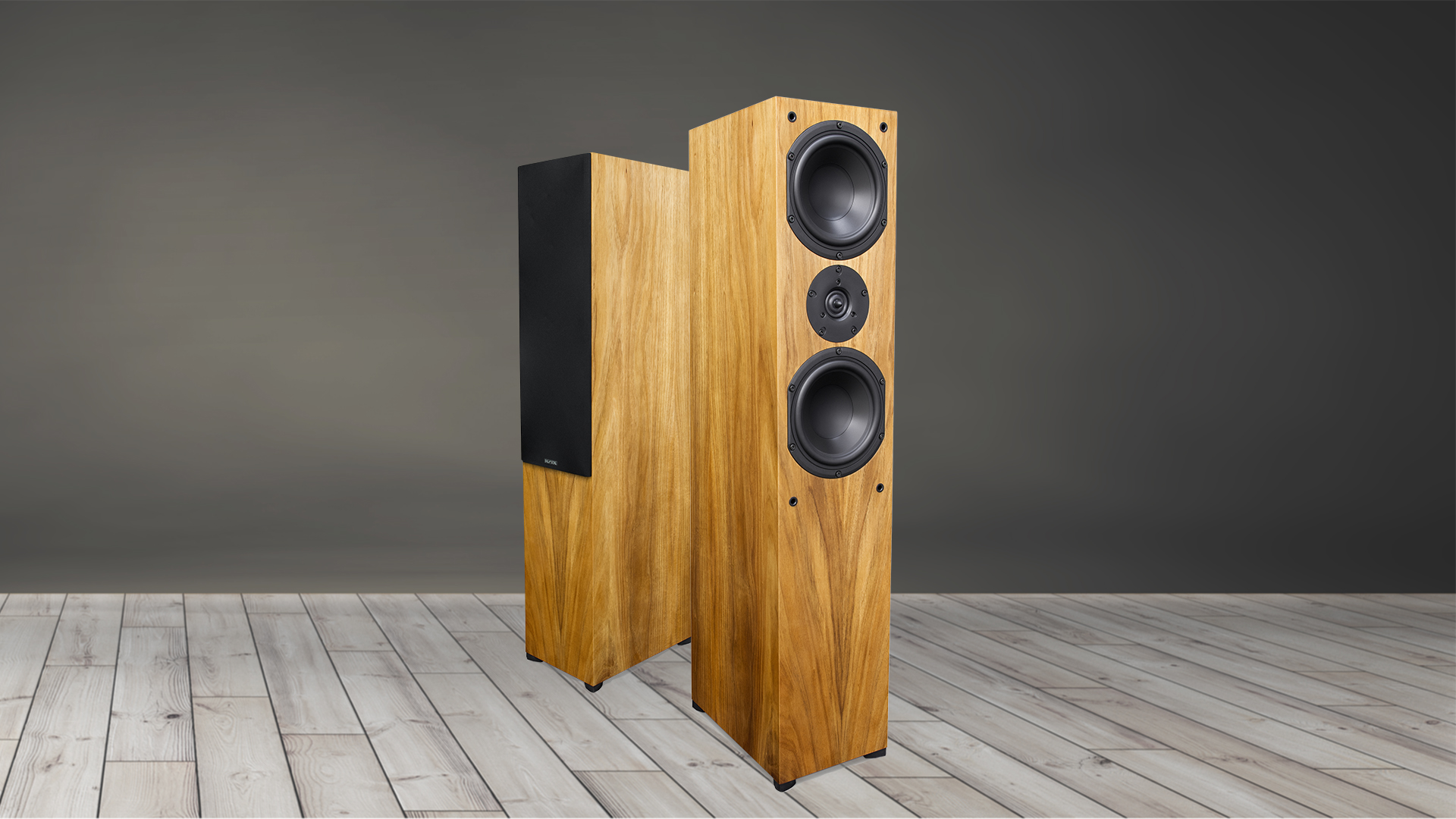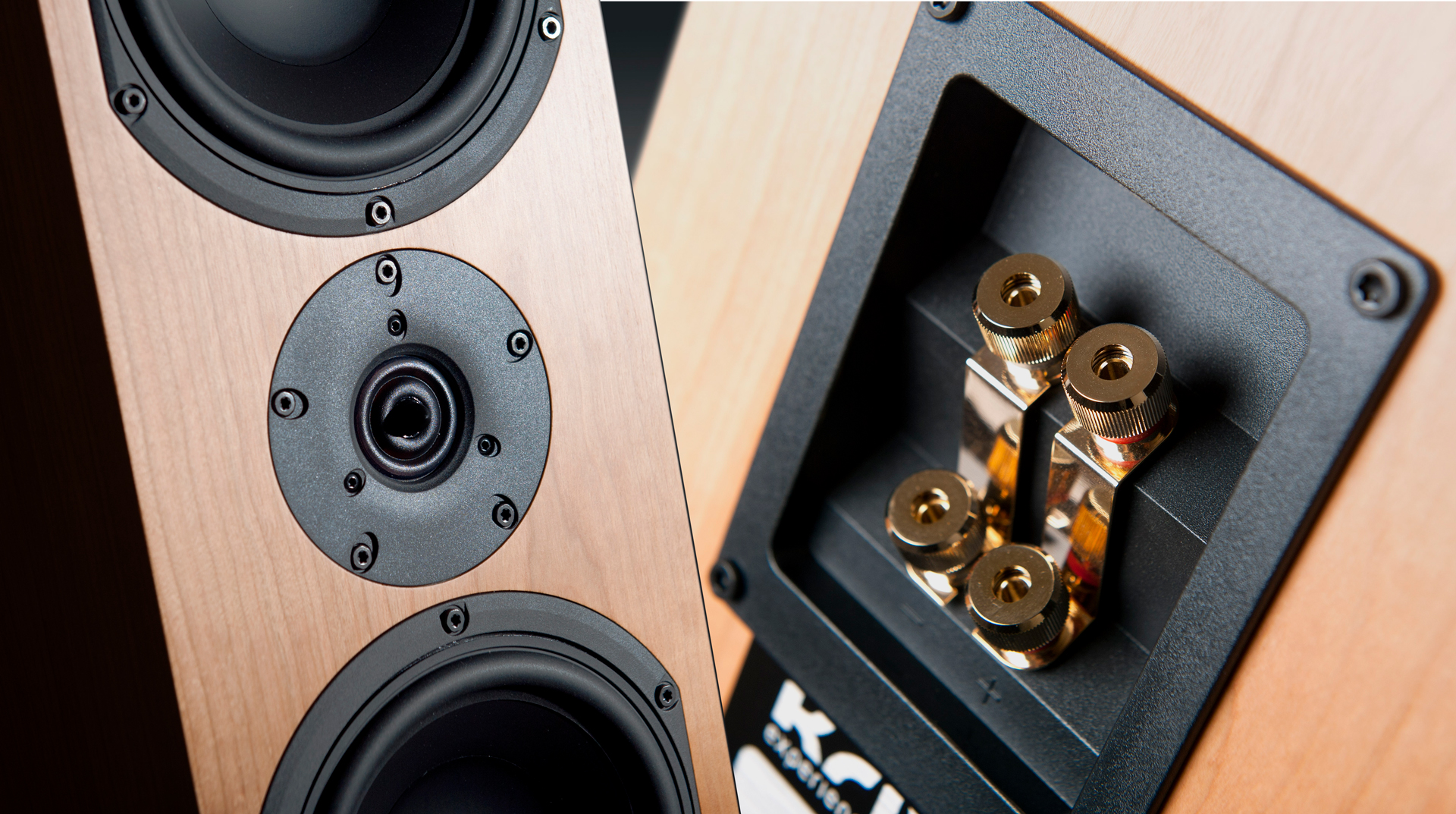Sound+Image Verdict
They may be fairly small floorstanders, but the Australian-built Krix Phoenix Mk2 speakers deliver a relatively big output, with a tweeter above its price level that assists in delivery of a sound that’s lucid yet also wonderfully accurate. They will sound superb, especially in home units and apartment buildings, and today their value equation is better than ever.
Pros
- +
Relatively large and lucid sound…
- +
…from nicely compact floorstanders
- +
Designed and built in Australia
Cons
- -
Nothing at this price
Why you can trust What Hi-Fi?

This review originally appeared in Sound+Image magazine, one of What Hi-Fi?’s Australian sister publications. Click here for more information on Sound+Image, including digital editions and details on how you can subscribe.
With global supply chains in recovery and shipping costs still through the roof since Covid, there’s more reason than ever for Australians to consider Australian loudspeakers. Local production now brings even greater cost advantages, while the lack of a third-party distributor potentially removes a profit stage from the purchase. It all makes for better value.
As for quality, Australian loudspeakers have challenged the world since the 1970s, and few brands more so than South Australia’s Krix, which makes the Phoenix Mk2 floorstanding speakers under review here. Founding Krix brother Scott spent his teenage years addicted to sound, tinkering in the family garage before completing an engineering degree and establishing Krix as a company in 1974. Through his own retail shop, Scott Krix demonstrated his designs against those from overseas, overcoming the Aussie cultural cringe to show the merits of his Australian designs, and their potential price advantage.
Supply couldn’t keep up with demand, so Krix bought an acre of land in Hackham, on the borders of McLaren Vale wine country – the site on which Krix still has its ever-extending factory and office buildings.
And that’s where the Phoenix Mk2 is manufactured, along with other Krix loudspeakers for both home and commercial use: there are thousands of commercial cinema installations globally using Krix speakers, while for the home it delivers the successful MX ‘wall-of-sound’ modular home cinema systems, as well as relatively conventional hi-fi and home cinema speaker ranges.
In the stereo floorstander space the company has three models available: the Neuphonix Mk2 at A$6295 the pair, the Harmonix Mk2 from A$3195, and these Phoenix Mk2 floorstanders, which are priced at A$2195 in black woodgrain or $2745 in the stunning Blackwood shown above, or in the darker Atlantic Jarrah shown below.
- Check out What Hi-Fi?'s best floorstanding speakers buying guide

Design

Drivers: 26mm dual concentric tweeter, 2x 165mm laminated polypropylene cone mid/bass
Quoted frequency response: 35Hz-40kHz
Sensitivity: 91dB
Nominal impedance: 6 ohms (min. 3.5 ohms)
Dimensions (hwd): 950 x 195 x 295mm
Weight: 18kg
Although titled as a Mk2 design, this latest version was far more than a simple update, introducing new drivers and also altering the whole cabinet process after Krix invested in new CNC machinery (Krix builds its own speaker cabinets, grilles and crossover networks in-house).
The panels in the cabinet are now mitre-joined to each other, rather than assembled using the ‘picture frame’ technique previously employed, making things inherently more rigid, with Krix’s ‘X-brace’ system going still further, also helping prevent standing waves in the cabinet.
The latest hi-fi, home cinema and tech news, reviews, buying advice and deals, direct to your inbox.
Those cabinets stand just under a metre high (95cm), a décor-friendly 19.5cm wide and 29.5m deep, for an internal volume of around 37 litres. This is a two-way bass-reflex design that arrays its two bass/midrange drivers and single tweeter in what’s most properly called an ‘MTM’ (Midrange Tweeter Midrange) configuration, the tweeter midway between the two midrange drivers. The primary advantage of this is better stereo imaging and a more realistic ‘presentation’ of that image.
The tweeter in the middle comes from the more expensive flagship Neuphonix model, and is a 26mm dual-concentric diaphragm type with a wave-guide centre plug for controlled directivity, a design usually referred to as a ‘ring radiator’. Two chambers at the rear of the diaphragm prevent reflections from interfering with the direct sound, while a copper shorting ring is fitted to reduce harmonic and other distortions.
The bass driver was new to the Phoenix when the Mk2 was launched, its ‘innards’ given a radical overhaul, with the magnet increased in size by 50 per cent and the voice-coil also dramatically increased from 25mm to 38mm. The drivers themselves are laminated polypropylene cones, nominally 165mm in diameter.
Those 38mm voice-coils are wound around an aluminium former, the voice-coil under-spider ventilated, and attached to the driver in a slightly unusual manner, with an intermediate funnel-shaped ‘header’ fitting where the small part of the header attaches to the voice-coil former, and the wider section attached to the speaker cone. This gives a far superior joint for both the voice-coil/header interface and the header/cone interface and means the cone is not being driven at its centre, but at a point about halfway across the cone surface, which gives better cone ‘drive’. Distortion is also reduced through the use of an aluminium flux stabilisation ring.

Sound
When setting up the Phoenix V2.0 speakers we found that their centre of gravity was high, so that a strong enough shove could overbalance the cabinets, so do take care with placement. But they’re not very tall so it’s not the issue it can be with higher slim ‘tower’ designs.
One of the first albums we played once the speakers were thoroughly run-in was ‘Dream Cave’ by Cloud Control, real experimenters with sound and music. ‘Dream Cave’ had us programming our player for repeat play, particularly The Smoke, The Feeling, Scar, Happy Birthday (not a cover!), Moonrabbit, and Island Living. The recording quality is a bit variable, but one constant is the clear and clean (if rather distant) drum sound. The Krix Phoenix delivered not only the sound of the drums exactly, but also all the psychedelic sound effects and the just-plain-weird extras (such as the water dripping that so suddenly interrupts Tombstone) to wonderful effect. The soundfield the Phoenix speakers delivered during the intro to Island Living was just amazing!
Calming down somewhat – we’d be the first to admit that Cloud Control's sonic effects are not ideal for critical auditioning purposes – we turned to more conventionally clean recordings of acoustic instruments and vocals. One such is Move’s wonderful recording of Virginia Taylor (flute) and Timothy Kain (guitar) on ‘Character Interludes’.
The high frequencies and overtones of Taylor’s flute were delivered to perfection through the Phoenixes, and we were particularly entranced by the sound during Máximo Diego Pujul’s Suite Buenos Aires, and especially in the second movement, Palermo. The purity and the extension of the Phoenix’s tweeter were just breathtaking to hear, and it’s an element that really raises the Phoenix Mk2 above its price category. The fact that the volume was perfectly balanced against the lower strings of Kain’s guitar was indicative of the fact that Krix has correctly ‘balanced’ the sound of the Phoenix to be completely linear, right across the audio spectrum.
To double-check this frequency balance we played back a recording of a chromatic scale being played on a grand piano. Other than the very lowest notes being very slightly diminished in volume, the Phoenix delivered all the other notes at exactly the same volume level – and with the correct tonal balance – so we were left in no doubt that the frequency response of the Krix Phoenix was perfectly flat right across this range, which is essentially all music’s fundamental notes.
We followed up with a number of ‘spoken word’ recordings (of various poems and Dylan Thomas’ radio play Under Milkwood) and found that the clarity of the Phoenix when reproducing male or female voice was outstanding, both in their tonal qualities and with excellent articulation.
After we further upped the auditioning ante with a long listening list of recordings across various genres, our admiration for what Krix has achieved with its entry-level floorstanders only became greater.
Not only is the frequency response superbly flat and uniform, so you hear exactly what has been recorded, but the stereo imaging and sound-staging are equally outstanding. There is certainly a ‘sweet spot’, but it’s pretty wide, and once you’re listening in it, the imaging is truly holographic, so that live recordings made in small environments, for example, really sound as if you’re present at the venue itself… the sound really immerses you, so it’s as if you’re hearing the performance not only from the front but also the echoes and acoustic from behind you as well… a complete aural experience. Who needs Dolby Atmos music!
- The best stereo amplifiers you can buy

Verdict
They may be fairly small floorstanders, but the Krix Phoenix Mk2 speakers deliver a relatively big sound, and one that’s amazingly lucid and also incredibly accurate, with that tweeter from a significantly higher model making a vital contribution. In any size of room, but especially in home units and apartment buildings, they will sound superb.
Sound+Image is Australia's no.1 mag for audio & AV – sister magazine to Australian Hi-Fi and to the UK's What Hi-Fi?, and bestower of the annual Sound+Image Awards, which since 1989 have recognised the year's best hi-fi and home cinema products and installations. While Sound+Image lives here online as part of our group, our true nature is best revealed in the print magazines and digital issues, which curate unique collections of content each issue under the Editorship of Jez Ford, in a celebration of the joys that real hi-fi and high-quality AV can bring. Enjoy essential reviews of the most exciting new gear, features on Australia's best home cinemas, advice on how to find your sound, and our full Buying Guide based on all our current and past award-winners, all wrapped up with the latest news and editorial ponderings. Click here for more information about Sound+Image, including links to buy individual digital editions and details on how best to subscribe.


